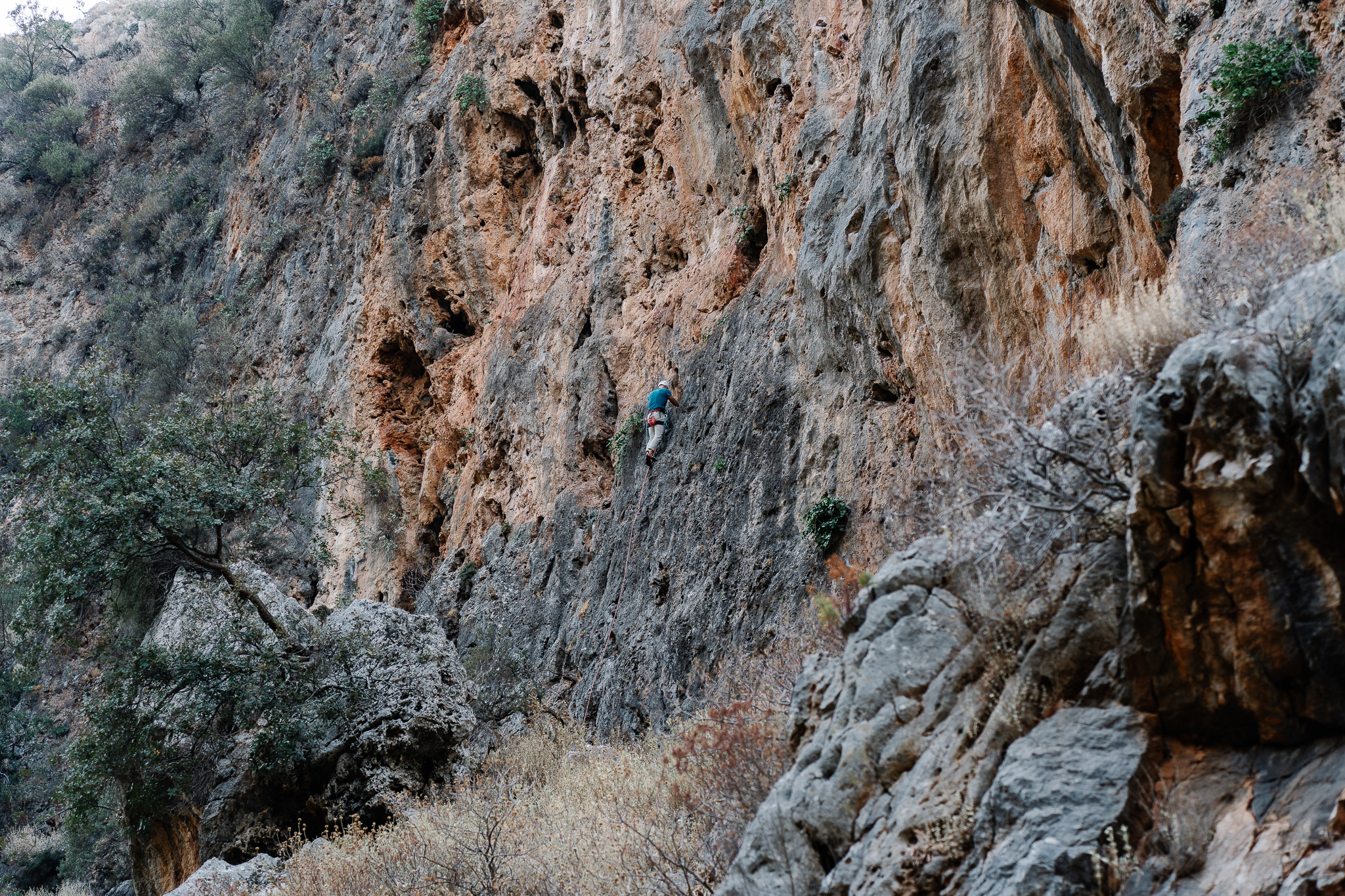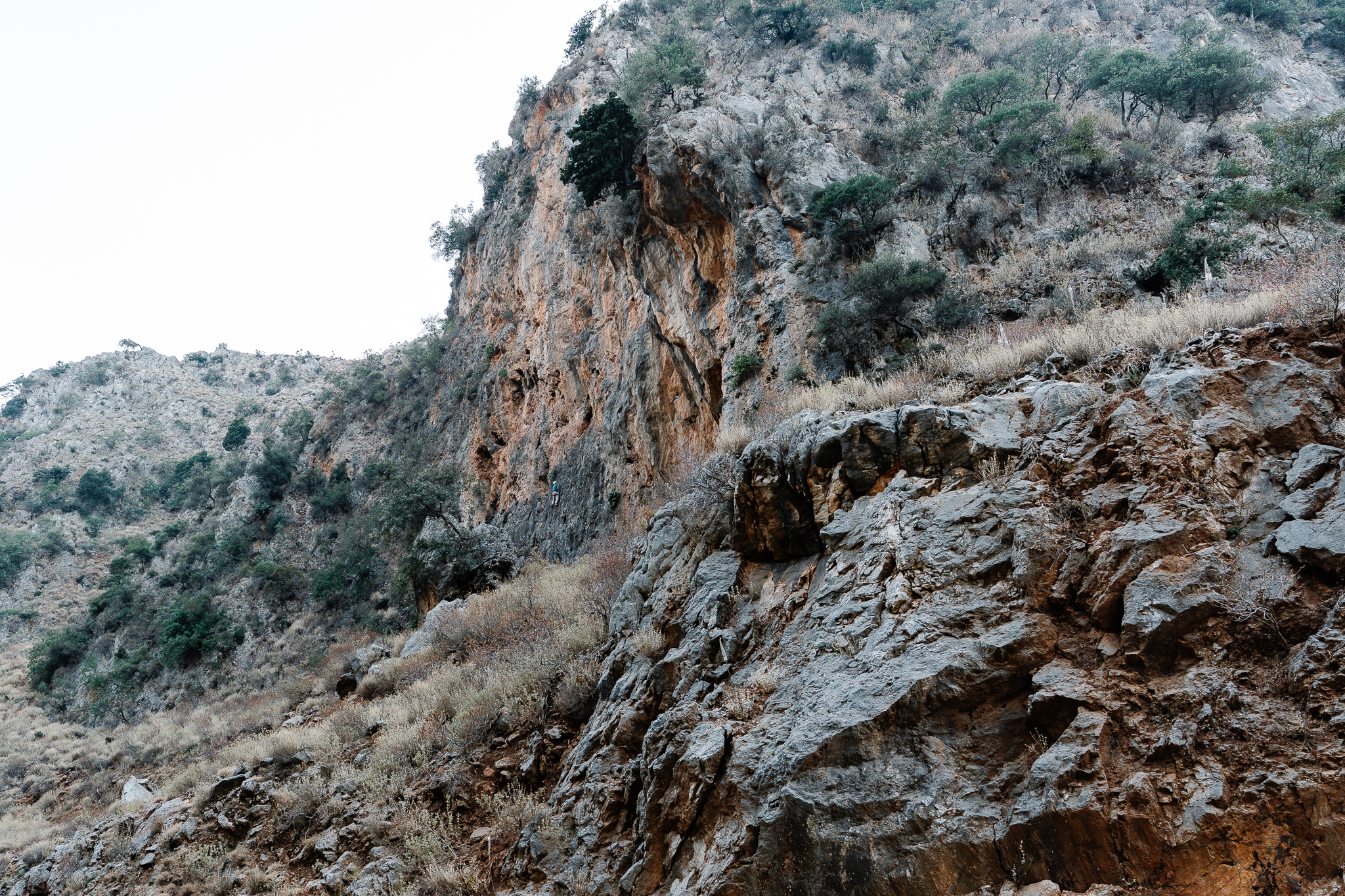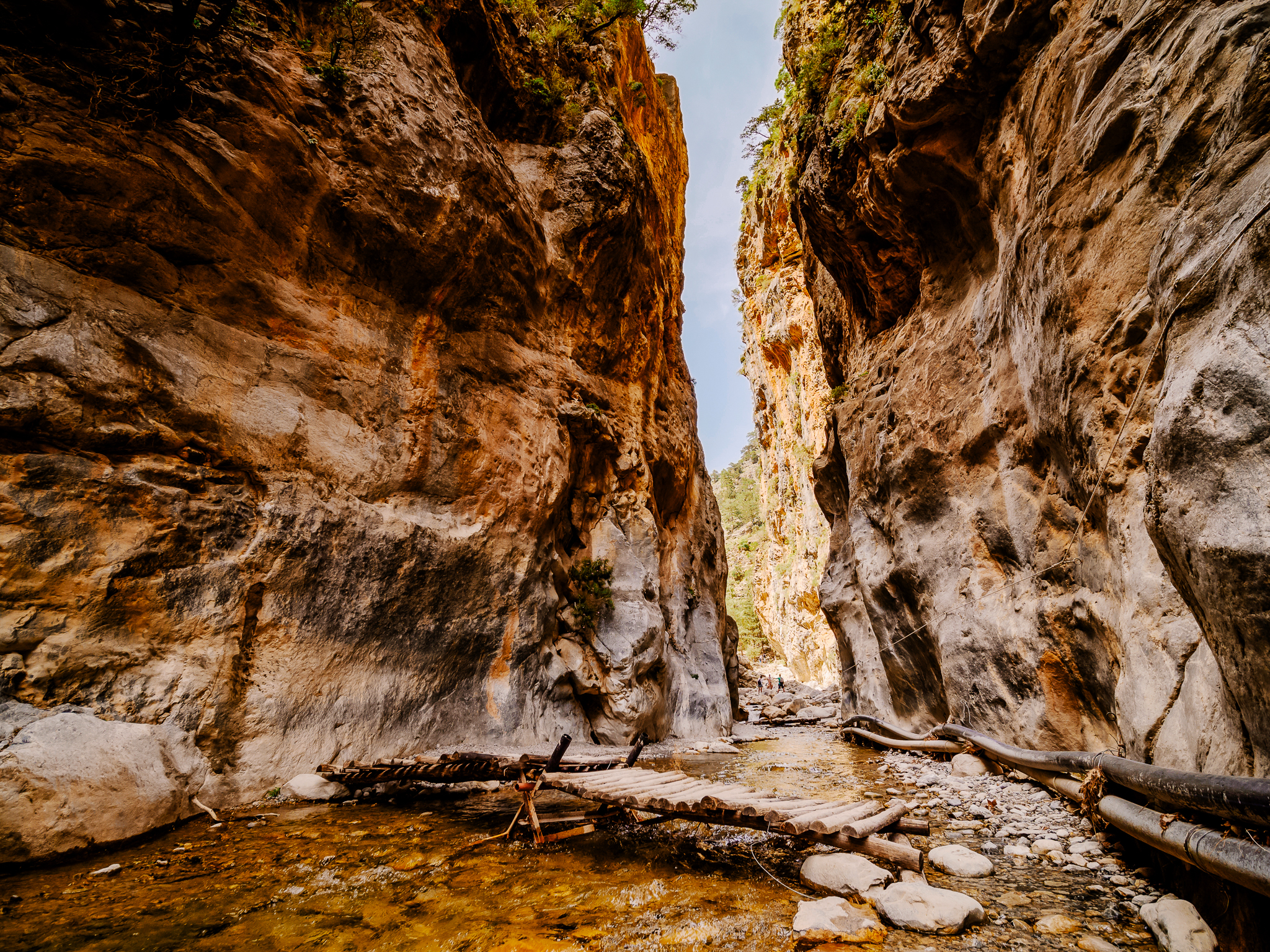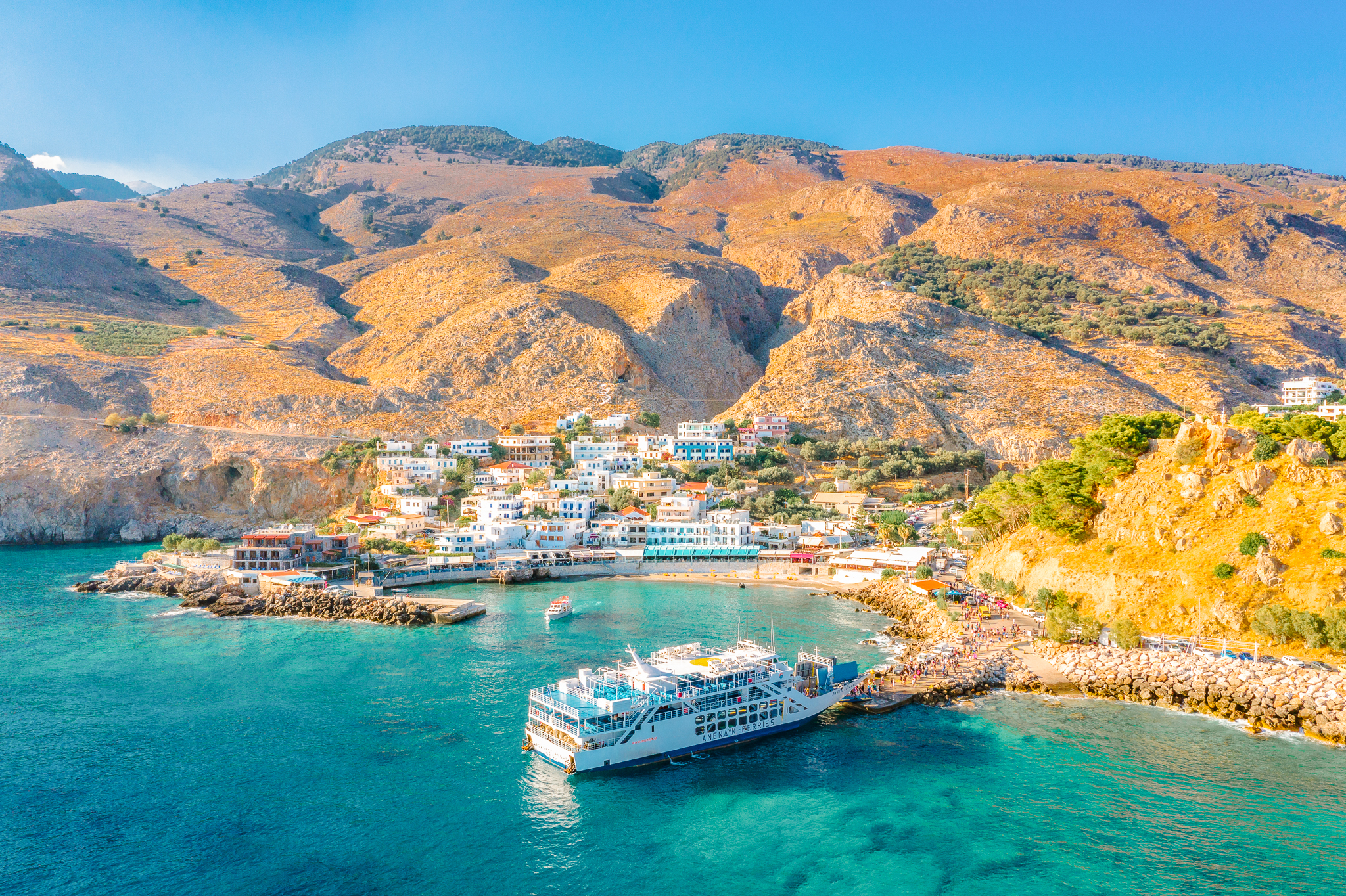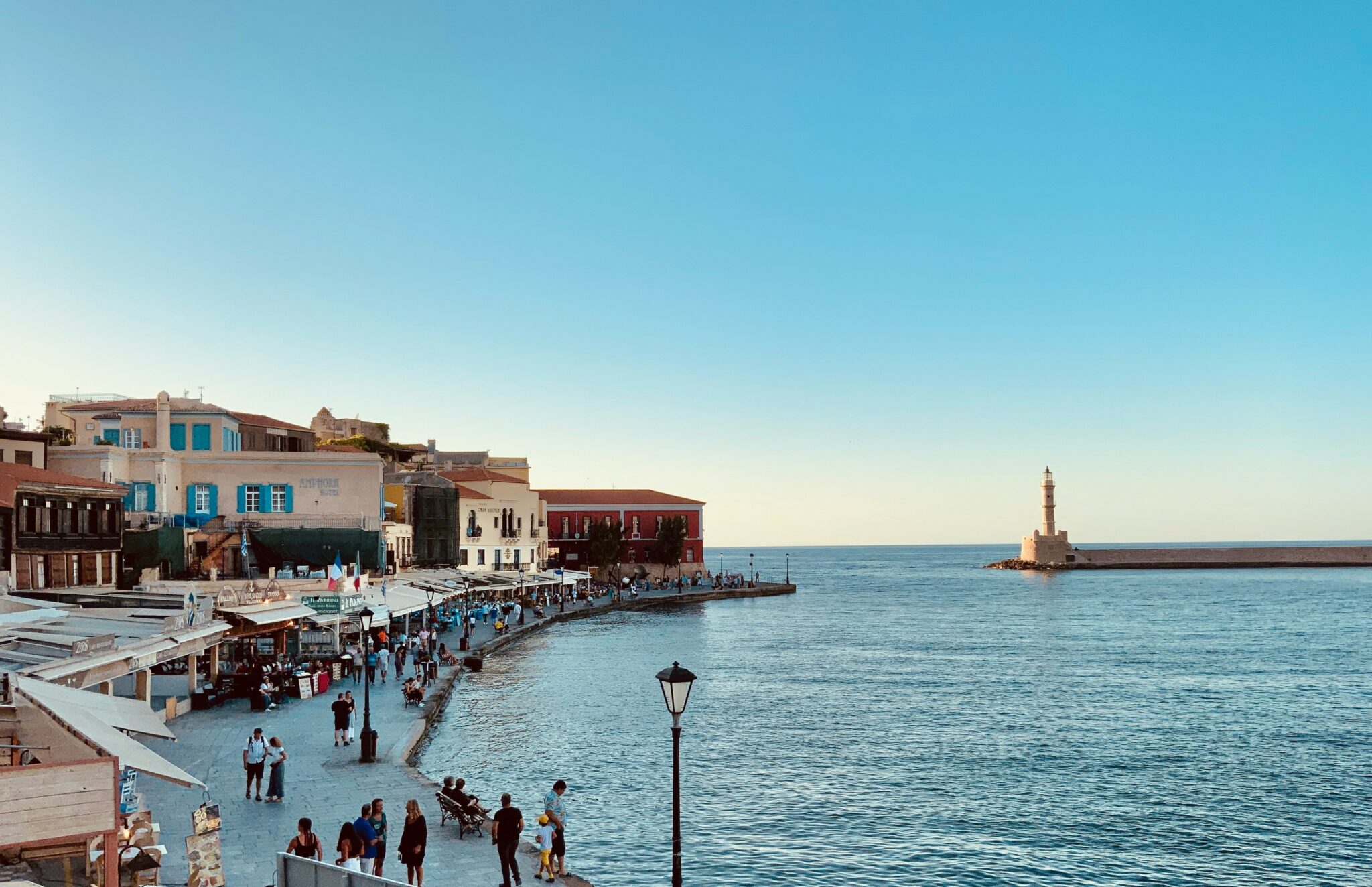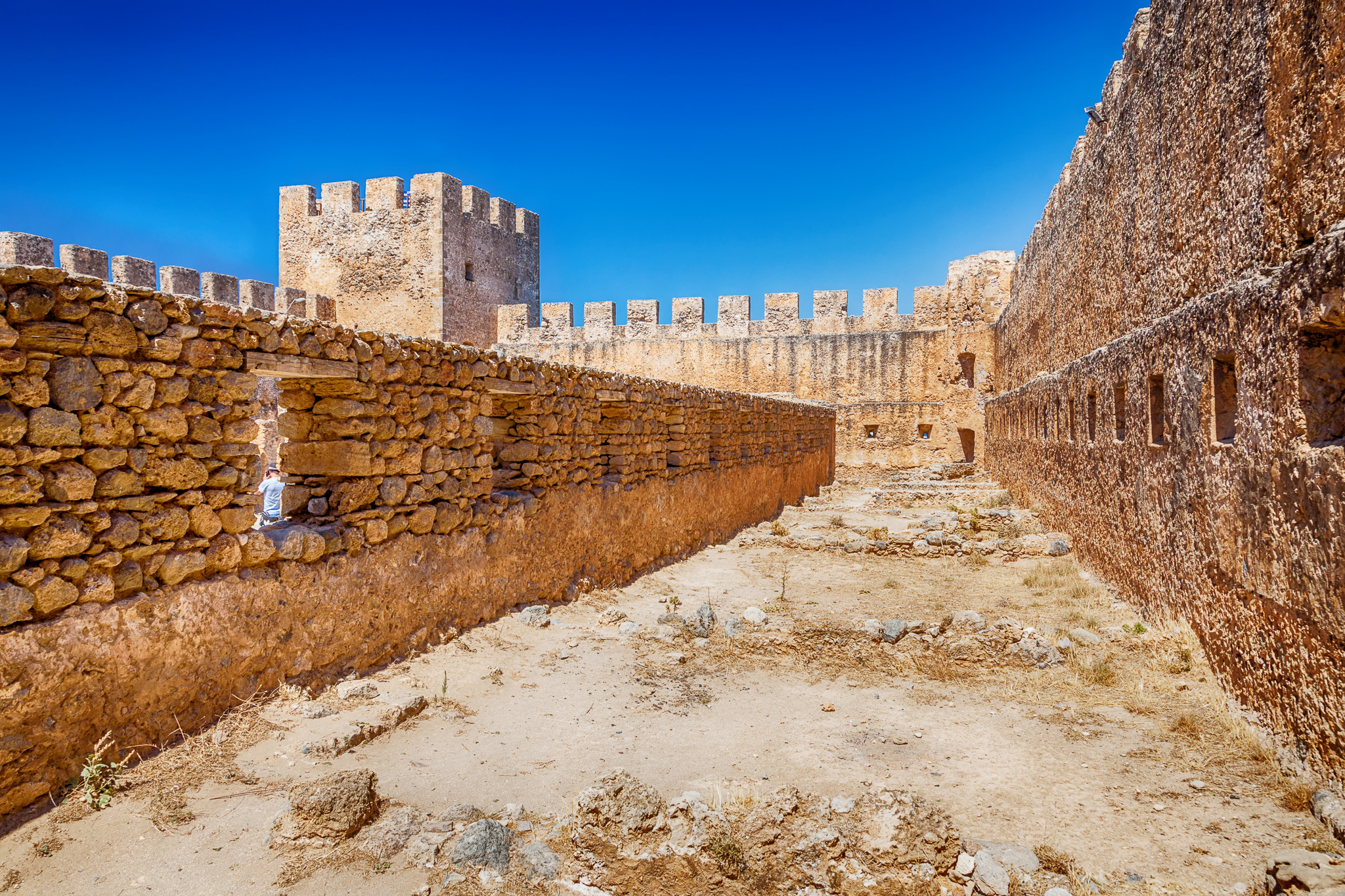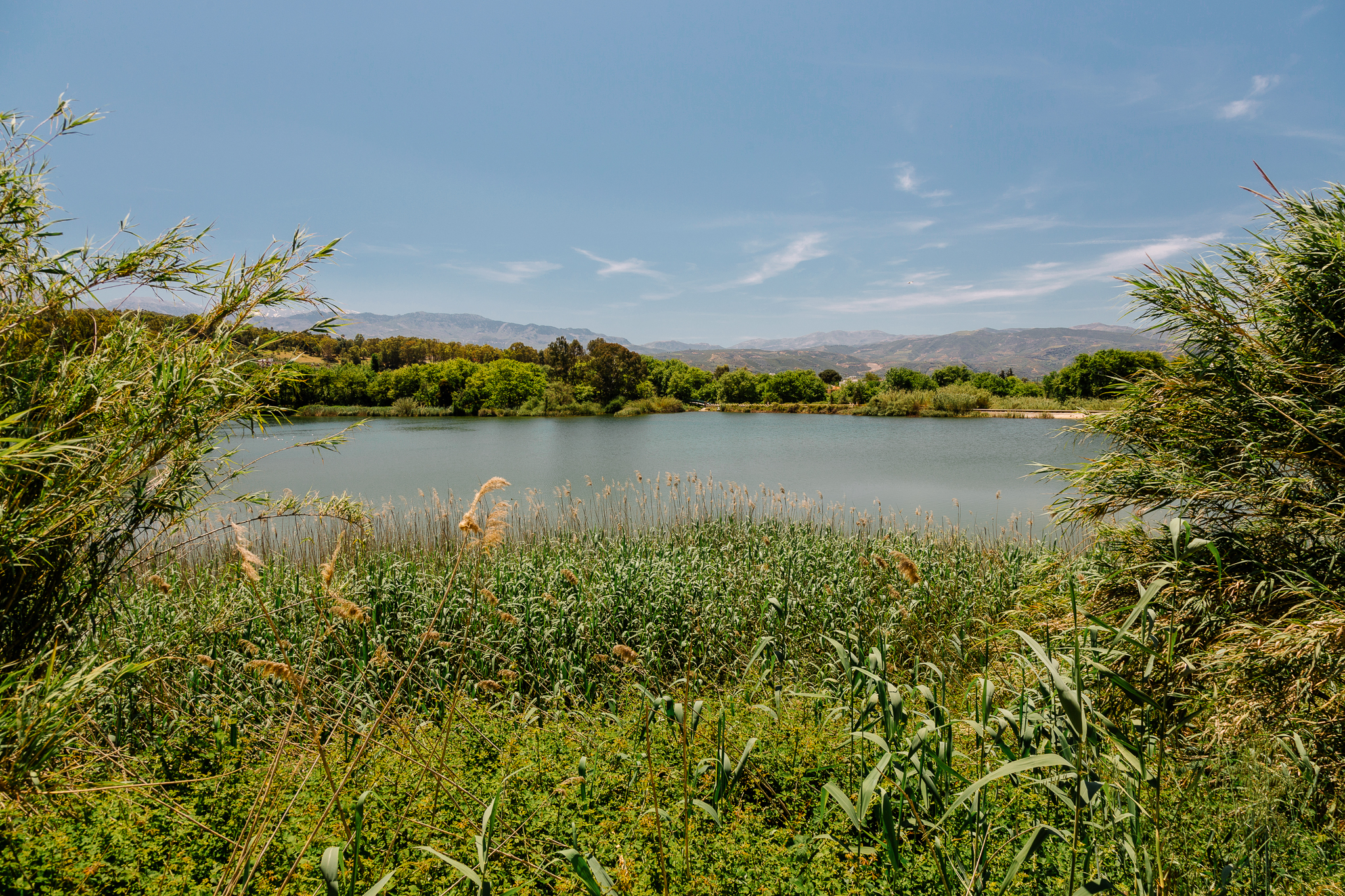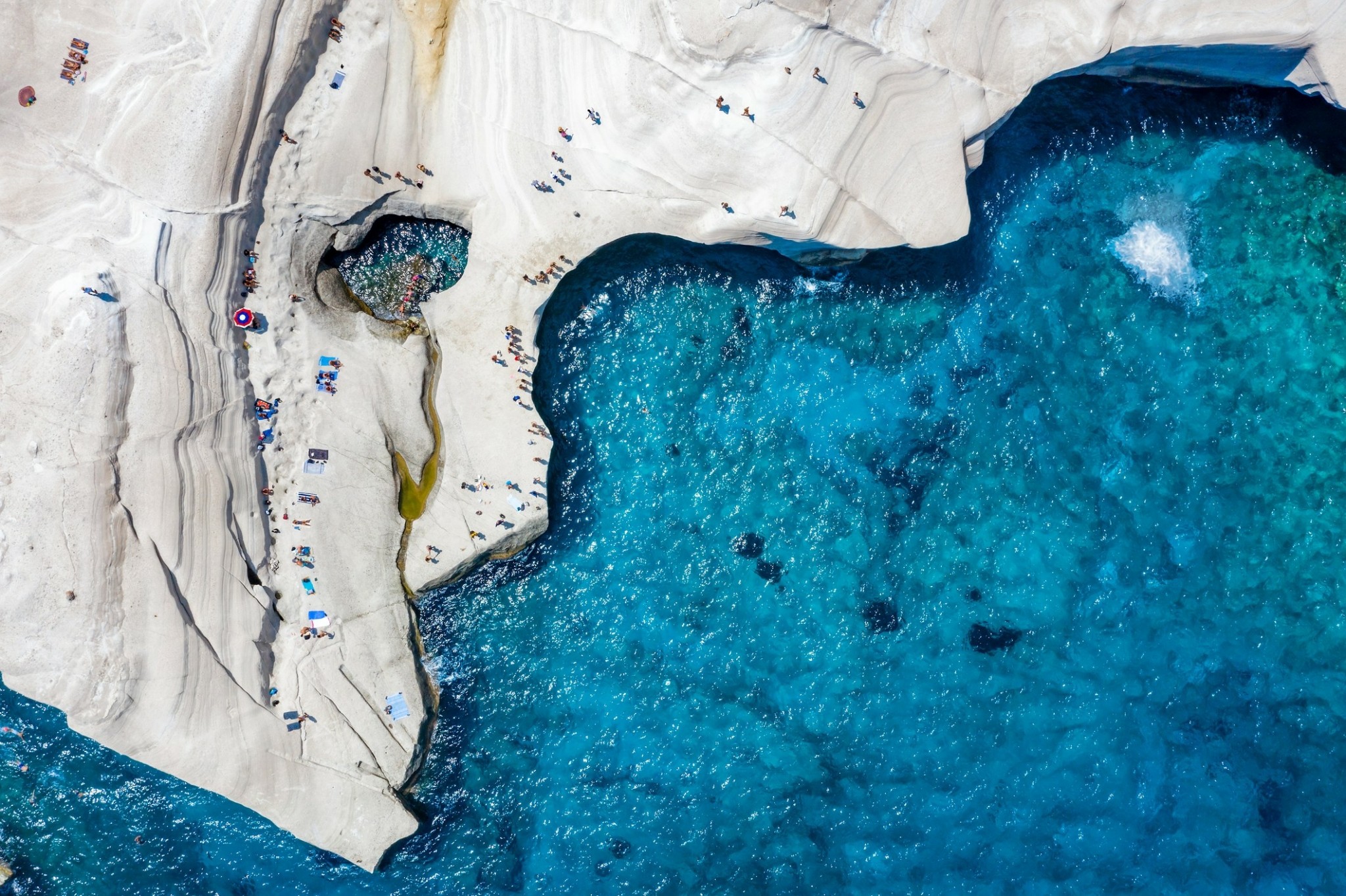With the historic city of Chania at its heart, western Crete remains the island’s most intriguing and unexplored region. Home to millennia-old heritage sites and diverse landscapes of natural wonder, the Chania prefecture offers dynamic activities that blend exploration with adventure, inviting visitors to discover a lesser-known side of Crete.
Cycling through Heritage
Chania emerges as a world-class cycling destination, where natural splendor meets historical significance. The region offers spectacular routes with challenging ascents and descents for experienced cyclists, including the scenic Akrotiri peninsula circuit and circular routes through Theriso. These paths lead riders past historical landmarks like the Gouverneto Monastery and the Venizelos Tombs, with routes tailored to every cyclist’s experience level, endurance, and equipment.
Climbing in Theriso
Just sixteen kilometers south of Chania, the Theriso Gorge stands as the region’s premier climbing destination. Its five-kilometer stretch offers challenging routes graded from five to eight, most of them well-secured for experienced climbers. The southeast-facing gorge provides optimal climbing conditions, with welcome shade during early morning and late afternoon hours.
The Gorges of Chania
Known for its untamed natural beauty, Chania boasts some of Crete’s most renowned gorges. These dramatic landscapes feature unique geological formations, rare flora and fauna, and mountain hiking trails, establishing themselves among Crete’s most significant natural attractions. Each gorge offers visitors an unforgettable experience and spectacular vistas for those adventurous enough to explore them.
Agia Irini Gorge
On the western flank of the White Mountains in the Selino province lies the Agia Irini Gorge. Stretching approximately 7.5 kilometers, this gorge takes its name from a small village near its entrance and features a stream that flows into the southern Cretan Sea. As Chania’s second most visited gorge, it distinguishes itself with the Byzantine churches of Christ and Saint George nestled within its walls, offering hikers a blend of natural wonder and historical significance.
Theriso Gorge
Just six kilometers from Chania city, the Theriso Gorge – also known as Eleftherios Venizelos Gorge – extends for nine kilometers through a landscape dotted with oleanders and plane trees. The Kladisos River flows through its length, eventually reaching the beach of Nea Chora. The gorge’s slopes provide sanctuary to various endemic flora and fauna species. Visitors can combine their gorge exploration with a visit to the historic village of Theriso, which played a pivotal role in Crete’s unification with Greece.
Aradena Gorge
Aradena stands as Chania’s deepest and most precipitous gorge, where towering cliffs create an ideal setting for both mountain hiking and bungee jumping. The hiking trail presents moderate challenges due to large boulders that narrow the path, with installed ladders facilitating passage through difficult sections. Beginning at the underground river of Drakolaki Cave at the foot of Thodoris peak in the White Mountains, the gorge extends for 15 kilometers. The journey concludes at the picturesque Marmara Beach, renowned for its pristine waters and scenic beauty.
Mountain Shelters and White Mountains
While Chania is celebrated for its crystal-clear beaches and countless historical monuments, its territory harbors rare ecosystems with unique flora and fauna, offering unparalleled routes through verdant mountain landscapes. Gorges, forests, shelters, rugged peaks, and flowing streams compose the mountainous tapestry of Chania, gifting visitors with unforgettable vistas and lasting memories.
Askyfou Plateau
Fifty kilometers south of Chania, nestled in a distinctive location within the White Mountains, lies the Askyfou Plateau. Named after the ancient Greek skyphos (cup) due to its bowl-like shape, the plateau hosts four small settlements where residents primarily engage in livestock farming. Today, it records the highest rainfall in Crete, with winter snowfall creating an enchanting spectacle.
Tavris Shelter
Perched at 1,200 meters above sea level on the Tavris plateau near Askyfou, this mountain refuge is accessible via a hiking trail from Ammoudari village. From here, a path leads to the Kastro peak of the White Mountains. Built in 1992 with a capacity for 45 people, the shelter operates by arrangement with the Chania Mountaineering Club.
Svourichti “Christos Choliopoulos” Shelter at Katsiveli Plateau
Named in honor of the Chania Mountaineering Club president who envisioned its creation, this shelter sits at 1,980 meters on the Katsiveli plateau, occupying a strategic position in the heart of the White Mountains’ Mountain Desert. Accessible via the Sfakian Madara trail and various sections of the E4 European Path, the shelter accommodates 20 people and serves as a base for summit expeditions, operating by arrangement with the Chania Mountaineering Club.
White Mountains National Park
The Samaria Gorge and White Mountains National Park spans nearly one-fifth of Chania prefecture, covering 51,000 stremmata (12,600 acres). This protected wilderness hosts rare flora and fauna unique to Greece, including more than 100 bird species and 70 plant varieties. The park distinguishes itself internationally for its pure freshwater springs and numerous caves scattered throughout its expanse. While initially encompassing only Samaria Gorge and adjacent areas, today it protects most of the White Mountains, preserving Chania’s natural wealth.
The Trails of Chania
Samaria Gorge: A Unique Hiking Path in Crete’s Heart
Europe’s most renowned hiking gorge draws thousands of visitors annually to experience its 16-kilometer journey through southern Chania’s dramatic landscape. Starting from Omalos plateau at 1,250 meters altitude and descending to the Libyan Sea at Agia Roumeli, this 5-7 hour trek traverses landscapes from dense cypress and pine forests to narrow passages between towering cliffs. The gorge’s most impressive feature, the “Gates” or “Sideroportes,” narrows to just 4 meters wide between 500-meter-high walls, offering hikers an awe-inspiring passage through this natural cathedral.
Since its 1962 designation as a National Park, Samaria has served as a sanctuary for the endangered Cretan wild goat (agrimi) and numerous endemic species. At its heart lies the abandoned village of Samaria, offering hikers a glimpse into old Cretan life. Spring presents the optimal hiking season, with cooler weather, peak vegetation, and flowing streams. Early morning or late afternoon starts help avoid peak crowds during summer months.
Sfakia Coastline: The Marmara-Sfakia Trail
This captivating 11.8-kilometer coastal path connects Marmara to Chora Sfakion, offering hikers an authentic taste of Cretan nature and history. Part of the international E4 trail, the route begins at idyllic Marmara beach, accessible by sea or through Aradena Gorge. Following the coastline, hikers encounter pristine beaches like Phoenix and Glyka Nera, passing through historic Loutro with its Venetian castle. This moderate 4-hour hike includes 690 meters of ascent and 662 meters of descent, reaching a maximum elevation of 106 meters, with clear yellow-black E4 markers guiding the way.
The Mountain Desert of White Mountains: A Unique Alpine Landscape
Above 2,000 meters in Crete’s White Mountains lies a landscape unique to the Northern Hemisphere: the Mountain Desert. This lunar plateau features dozens of conical peaks known as “Sori,” culminating in Pachnes summit at 2,453 meters. The slopes, inclined at 30 degrees, create an apparent desert, though hardy plants survive in this harsh environment. Access comes primarily via the Madara road from Anopoli Sfakion, used by local shepherds reaching their traditional stone dairy huts (mitata) where they produce the region’s renowned graviera cheese.
Winter transforms this landscape into an alpine wonderland, with snow lasting into mid-summer in some areas. While challenging even for experienced mountaineers, the Mountain Desert reveals many secrets, including medieval hunting artifacts that prove Sfakian hunters reached far higher altitudes than previously thought.
Points of Interest in Chania
The Regional Unit of Chania stands among Greece’s most richly endowed areas for medieval monuments and beyond. Its multicultural historical legacy has bestowed remarkable architectural treasures throughout both Chania city and its broader region. Here are the essential landmarks that warrant a visit during your exploration of Western Crete.
Venetian Harbor – Old Town of Chania
The Venetian Harbor, Chania’s most iconic landmark, draws visitors worldwide to its historic waters. This 14th-century maritime marvel, originally serving commercial purposes, features defensive structures like the Firka Fortress that once protected against pirate raids. The harbor’s crown jewel, the “Egyptian Lighthouse,” stands as one of the world’s oldest surviving beacons. Today, the old port enchants visitors with elegant cafes, art shops, and tavernas celebrating Cretan cuisine. A stroll through the Old Town’s narrow lanes reveals Chania’s timeless allure – a city where Arab, Venetian, Ottoman, and Jewish influences merge in architecture and atmosphere.
Gramvousa Castle
At Crete’s western tip near Cape Gramvousa stand two uninhabited islets: Imeri Gramvousa and Agria Gramvousa. Imeri Gramvousa captivates with its pristine beach waters, a 1968 shipwreck, and most impressively, its commanding Venetian fortress. This 137-meter-high defensive tower, built in the late 16th century under Latino Orsini’s supervision, features an irregular triangular design with walls and bastions on three sides. Beyond its architectural significance, the castle offers breathtaking panoramic views.
Frangokastello
Twelve kilometers east of Hora Sfakion lies this remarkable example of Venetian military architecture. Originally named Saint Nikitas by the Venetians, locals dubbed it Frangokastello (“Castle of the Franks,” their term for Catholics). The rectangular fortress, with its four corner towers and the preserved relief of Saint Mark’s Lion above its main gate, tells tales of Venetian nobility through surviving coats of arms. The castle gained legendary status after the May 1828 battle where 600 Greeks under Hatzimichalis Dalianis fought against Turkish forces, giving rise to the myth of the Drosoulites – shadow warriors said to appear in late May mornings, marching from the castle toward the sea.
Chania Metropolitan Church
Located on Chalidon Street in the Old Town, this cathedral dedicated to the Presentation of the Virgin Mary replaced a 14th-century church that briefly served as a soap factory during Ottoman rule. Legend holds that a miracle by the Virgin Mary, saving the local Pasha’s child, restored its religious function. The current structure, completed in 1860, features a three-aisled basilica design with an elevated central aisle.
Landscapes of Interest in Chania
Natural heritage vistas greet visitors at every turn in this remarkable region. From azure lakes to untamed mountains, from the Libyan Sea coast to deeply forested gorges, Chania Prefecture showcases rural Crete at its finest. These natural attractions, crafted by time itself, narrate the land’s history and concentrate the essence of what Crete offers.
Samaria Gorge
Europe’s second-longest gorge graces exceptional Crete. As Sfakian locals proudly declare, “There is only one Farangas of Samaria – all others are merely gorges.” South of Omalos plateau, nestled in the White Mountains’ heart, the gorge begins at Xyloskalo at 1,200 meters. Part of the E4 international trail and the White Mountains National Park (one of Greece’s oldest natural reserves), it stretches 16 kilometers to Agia Roumeli on the Libyan Sea coast. The journey features highlights like the Sideroportes (Iron Gates), where walls narrow to 4 meters with 400-meter heights. The mostly descending 5-7 hour trek passes small caves including Demonospilos, twenty-two pristine springs, dense forests, and churches like the one in abandoned Samaria village, named after Saint Mary’s Church built in 1379. This biodiversity haven hosts 450 plant species and unique fauna, including the Kri-Kri wild goat, Cretan badger, golden eagles, and griffon vultures. Typically open May through October, spring offers optimal hiking conditions, avoiding crowds while enjoying perfect temperatures amidst blooming vegetation.
Lake Kourna
This unique freshwater lake nestles at Mount Dafnomadara’s foot, spanning 579 stremmata with a maximum depth of 22.5 meters, fed by two natural springs. Its distinctive white sand shores, just 2.5 kilometers from the Libyan Sea coast, create a maritime atmosphere. Summer transforms it into a resort destination with umbrellas and pedal boats. The name likely derives from the Arabic “kourna” meaning lake, though anciently known as Korisia. Its wetland hosts ducks, geese, 130 bird species, and the rare two-colored Terrapin turtle. The lake lies 43 kilometers from Chania via the National Road.
E4 Trail
No better way exists to know a land than to walk it. The E4 European Long Distance Path, marked by the European Ramblers Association, traverses Crete’s length and all its major mountain ranges. Starting from Kissamos in Chania, it descends to Elafonisi, reaches Kato Zakros, and finally climbs north to Sitia. Encompassing 91 distinct hiking routes, it showcases Crete’s diverse natural beauty. Trails follow coastlines, gorges, monasteries, valleys, living and forgotten villages, archaeological sites, and mountains including the White Mountains and Psiloritis. Marked with yellow and black blazes in 1993-1994 through collaboration between the Region of Crete and local mountaineering clubs, this cross-island journey rewards challenging hikes with comprehensive views of Cretan landscapes.
Lake Agia
Just 9 kilometers from Chania city lies Lake Agia, a 450-stremma artificial reservoir beside its namesake village. Created for irrigation and water supply to Alikianou area, it connects with Fasa Valley, considered among Crete’s wettest regions, fed by White Mountains waters and Xekolomenos River springs. This Natura 2000 wetland provides ideal habitat for large bird populations and migratory species. While supplying water to Chania city and surrounding agriculture, it offers nature trails around its unique ecosystem for bird watching. Visitors can learn about Chania’s electrification history at the Small Hydroelectric Station, operating since 1928.




